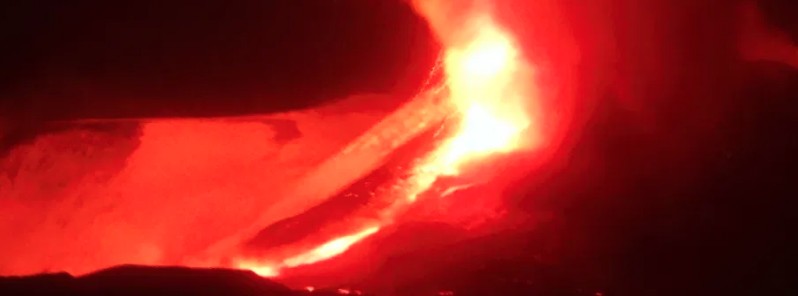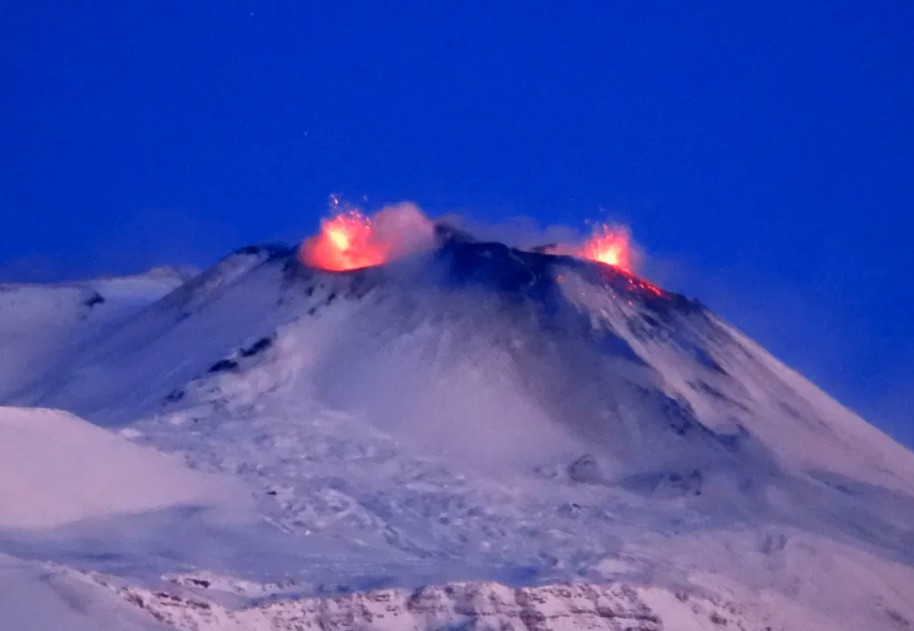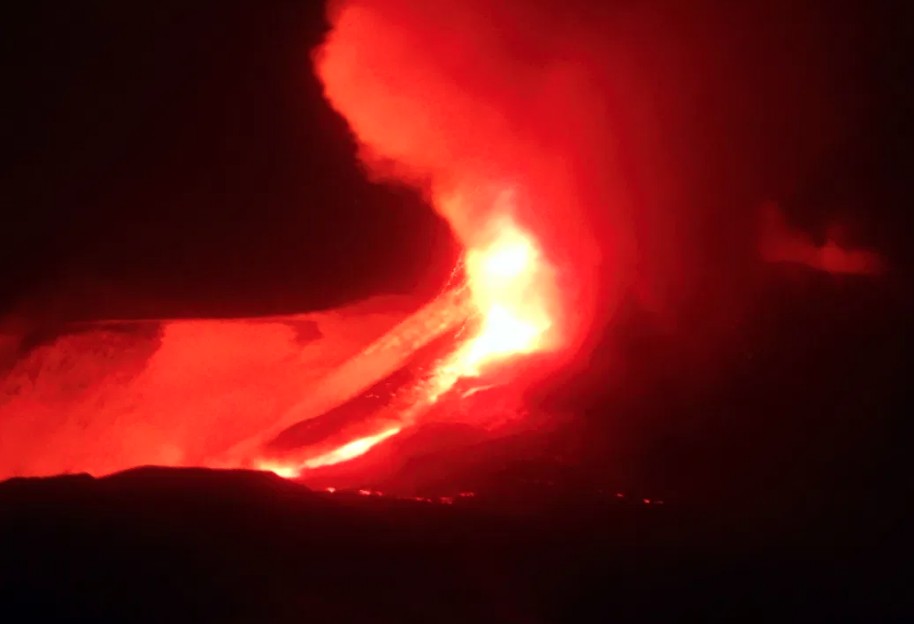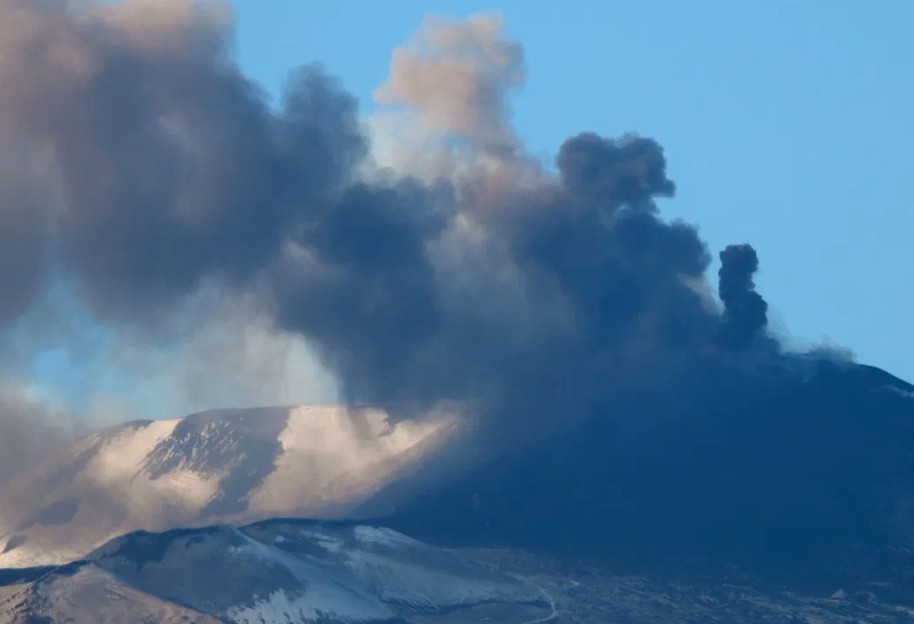Intense Strombolian activity continues at Etna’s Southeast Crater, lava emission resumes

Intense Strombolian activity continues at Etna's Southeast Crater since December 13, 2020. The most recent paroxysmal episodes occurred at the Voragine crater in December 2015 and May 2016. Since then, activity at Etna's summit has never reached the intensity of a paroxysm until the evening of December 13.
Strombolian activity at the easternmost mouth of the Southeast Crater started at the beginning of December 2020 and rapidly intensified on the evening of Sunday, December 13, INGV's Boris Behncke said.
A series of landslides began on the southern flank of the Southeast Crater cone, which generated pyroclastic flows at 22:15, 22:16, and 22:30 UTC, heading southwest. Two lava flows were observed on the southern flank, traveling toward the south.
Lava fountaining during the first phase lasted a few tens of minutes and ended just before 23:00 UTC. Strombolian activity intensified at around midnight UTC on December 14, culminating in the second phase of lava fountaining, also lasting about 10 minutes.
Modest Strombolian activity continued throughout the rest of the night and morning, while the effusive activity ceased, and at dawn, there were few incandescent spots on the southwestern flow front.

Simultaneous strombolian activity at Etna on the morning of December 2, 2020. Credit: INGV

Fountains and lava flows during the second paroxysmal phase of the eruptive episode on the night between December 13 and 14, 2020. Credit: INGV

Ash emission from the Southeast Crater on the afternoon of December 14, 2020. Credit: INGV
During the day of December 14, the emission of ash increased and a vent further east was activated at the Southeast Crater, between the 'saddle mouth' and the easternmost vent.
An inspection carried out by INGV-Osservatorio Etneo personnel ascertained that the morphology of the Southeast Crater had undergone strong changes due to the activity of the previous night. The 'mouth of the saddle' has widened, and in its southwestern edge, there is a deep opening.
Nearly continuous Strombolian activity continued on the evening of December 14, producing loud roars.
Strombolian activity intensified again on the morning of December 15, affecting three eruptive vents on the Southeast Crater.
Lava emission from the southwestern side of the cone resumed.





Geological summary
Mount Etna, towering above Catania, Sicily's second-largest city, has one of the world's longest documented records of historical volcanism, dating back to 1500 BCE. Historical lava flows of basaltic composition cover much of the surface of this massive volcano, whose edifice is the highest and most voluminous in Italy.
The Mongibello stratovolcano, truncated by several small calderas, was constructed during the late Pleistocene and Holocene over an older shield volcano. The most prominent morphological feature of Etna is the Valle del Bove, a 5 x 10 km (5.1 x 6.2 miles) horseshoe-shaped caldera open to the east.
Two styles of eruptive activity typically occur at Etna. Persistent explosive eruptions, sometimes with minor lava emissions, take place from one or more of the three prominent summit craters, the Central Crater, NE Crater, and SE Crater (the latter formed in 1978).
Flank vents, typically with higher effusion rates, are less frequently active and originate from fissures that open progressively downward from near the summit (usually accompanied by strombolian eruptions at the upper end).
Cinder cones are commonly constructed over the vents of lower-flank lava flows. Lava flows extend to the foot of the volcano on all sides and have reached the sea over a broad area on the SE flank. (GVP)
Featured image credit: INGV

Commenting rules and guidelines
We value the thoughts and opinions of our readers and welcome healthy discussions on our website. In order to maintain a respectful and positive community, we ask that all commenters follow these rules:
We reserve the right to remove any comments that violate these rules. By commenting on our website, you agree to abide by these guidelines. Thank you for helping to create a positive and welcoming environment for all.